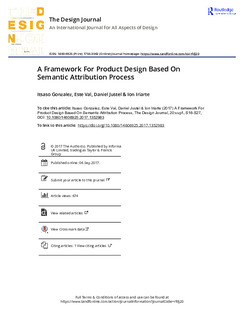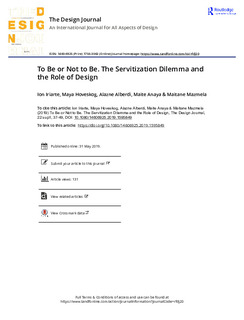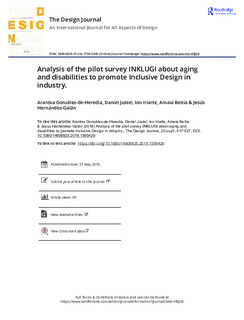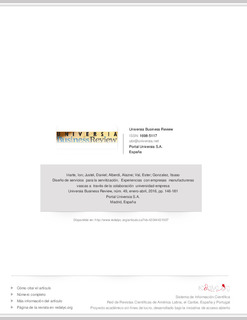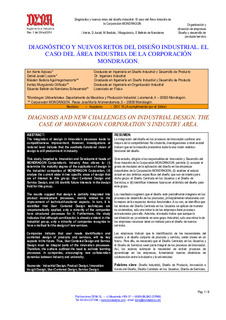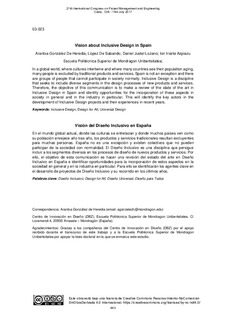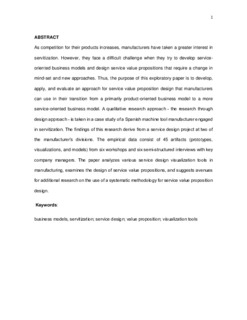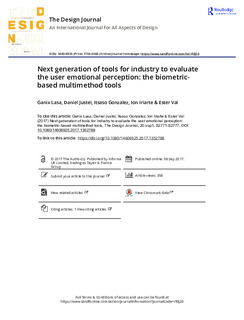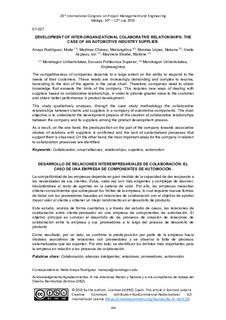Bilatu
19-tik 11-19 emaitza erakusten
A Framework For Product Design Based On Semantic Attribution Process
(Taylor & Francis, 2017)
Existing brands already have certain products that generate a particular experience in customer minds. Every time a customer’s interacts with of brand’s products and related touchpoints, the customer form an idea about the ...
To Be or Not to Be the Servitization Dilemma and the Role of Design
(Routledge, 2019)
This article seeks to answer the question of how value proposition is
created using a human-centred approach in the context of deservitization, in general, and service dilution, in particular. The article aims to describe ...
Analysis of the pilot survey INKLUGI about aging and disabilities to promote Inclusive Design in industry
(Routledge, 2019)
This study is part of the project INKLUGI. The main objective of the project is to create new tools that help to introduce Inclusive Design methods in the industry of the region of Gipuzkoa. To make companies understand ...
Diagnosis and new challenges on design. The case of Mondragon Corporation's industry areaDiagnóstico y nuevos retos del diseño industrial. El caso del área industrial de la Corporación Mondragón
(Elsevier Ltd, 2015)
La integración del diseño en los procesos de innovación conlleva una mejora de la competitividad. No obstante, investigaciones a nivel estatal indican que en la industria predomina todavía una visión estético-funcional del ...
Visión del Diseño Inclusivo en EspañaVision about Inclusive Design in Spain
(AEIPRO, 2017)
In a global world, where cultures intertwine and where many countries see their population aging, many people is excluded by traditional products and services. Spain is not an exception and there are groups of people that ...
Desarrollo de relaciones interempresariales de colaboración: el caso de una empresa de componentes de automociónDevelopment of inter-organizational colaborative relationships: the case of an automotive industry supplier
(AEIPRO, 2019)
The competitiveness of companies depends to a large extent on the ability to respond to the needs of their customers. These needs are increasingly demanding and complex to resolve, translating to the rest of the agents in ...


